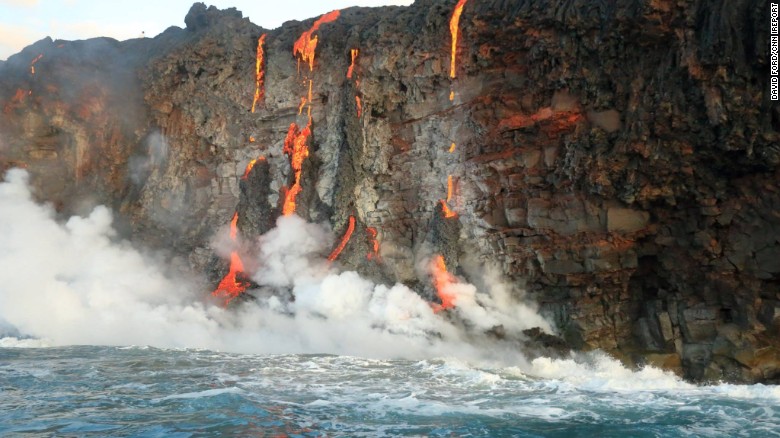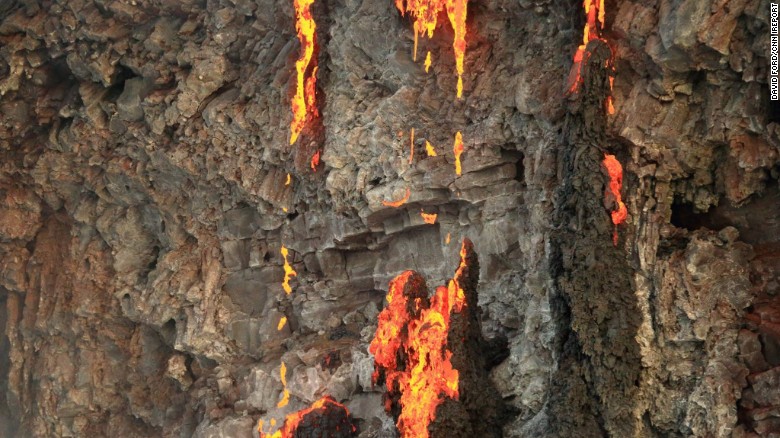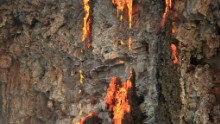(CNN)The Big Island of Hawaii is getting a little bigger as lava from the Kilauea Volcano flows into the Pacific Ocean.


The 6.5 mile-long lava flow has been dribbling down the south flank of Kilauea since May, according to the U.S. Geological Survey Hawaiian Volcano Observatory. It reached the ocean on Tuesday morning.
The USGS said the flow is about 20 meters (66 feet) wide where it spills over the cliff into the sea.
The
red-hot lava creates huge plumes of steam as it hits the water and
begins cooling into rock, delighting locals and eager tourists.
Kanoa Jones has a full-time job as a mechanic and welder, but has taken a leave of absence to run lava boat tours.
He's gotten a permit for his company and has been captaining his brother's boat, while he puts the finishing touches on his own vessel.
"There's
been people calling for a month now, trying to get in the boat," Jones
said. He plans to start doing sunrise and sunset tours on Monday.
Most days, Jones said, you could probably sail right up to the lava, but he keeps a safe distance.
"Sometimes,
if the lava's flowing heavy when it hits the water it could explode,
but usually it's really mellow," he said adding that you can still feel
the heat on the boat.
David Ford
rode near the lava flow in a different boat and said he could smell
sulfur and hear a sizzle when the lava hit the water.

"I
have never seen an ocean entry from the ocean, and it was really cool
to see from that angle, lower than a helicopter, and no cliff in the way
as would happen if viewing from land," Ford said.
You can get closer to the flow if you're willing to endure a tough hike.
The USGS warns that getting too close can be extremely dangerous, and even deadly. The agency has released a pamphlet
listing the risks from collapsing ledges, acid fumes, steam vents that
can toss rocks and jets of hot lava -- not to mention the risk of heat
stroke, sprained ankles and other injuries on the hike.

Kilauea has been active since 1983, but this is the first time in three years that lava has reached the ocean.
In June 2014, lava threatened the village of Pahoa, forcing residents to evacuate and destroying at least one home.
There is no immediate threat to nearby communities.
If we look today Satellite data for Hawaii, (see below) the SO2 emissions can be seen.



No comments :
Post a Comment